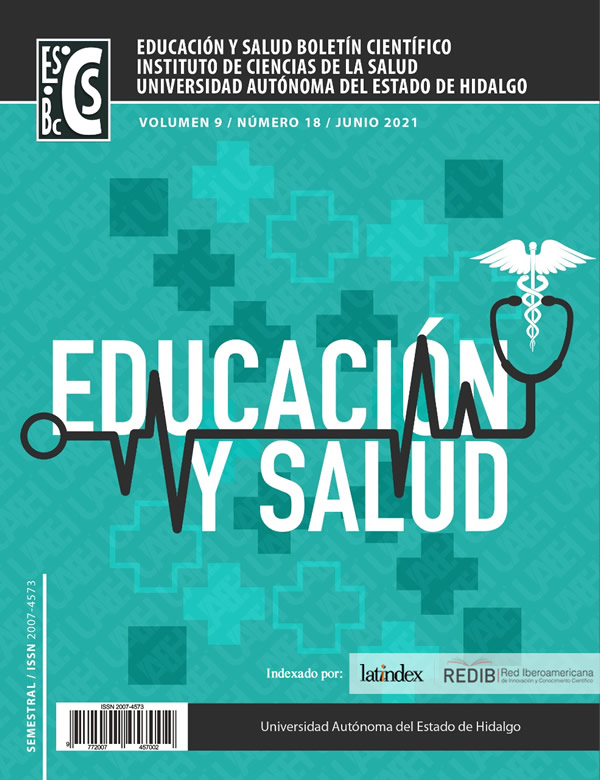Physiotherapy in dystonic dyskinetic infantile cerebral palsy: A case study
Abstract
Introduction: Infantile cerebral palsy is a neurological disorder that affects motor function, as well as muscle control, coordination and movement. The objective of this study is to describe the motor development of a child with dystonic-type dyskinetic cerebral palsy using the integral physiotherapeutic approach. Case Description: A 2-year-old boy with dystonic-type dyskinetic cerebral palsy with prematurity is presented. Intervention: Using the Gesell Scale, an initial evaluation was performed. Specific physiotherapeutic treatment was applied twice a week for 3 months. It acts on their motor, psychosocial, language and adaptive development. In the end, development was re-evaluated on the same scale. Results and discussion: The age limit obtained in the baseline evaluation was 7 months old. After the intervention, an improvement in his postural control, in his postural and balance reactions could be observed. The evolution of the child after the physiotherapeutic treatment was favorable in the period evaluated, according to the results obtained. The final evaluation with the Gesell Scale gave an age limit of 1 year 4 months. Conclusion: The short physiotherapy program applied to the patient showed favorable effects on his psychomotor development.
Downloads
References
Palisano R, Rosenbaum P, Walter S, Russell D, Wood E, Galuppi B. Development and reliability of a system to classify gross motor function in children with cerebral palsy. Dev Med Child Neurol. 1997;39:214-23. https://doi.org/10.1111/j.1469-8749.1997.tb07414.x
Guía de Práctica Clínica Abordaje y Manejo del Niño con Parálisis Cerebral Infantil con Comorbilidades Neurológicas y Músculo Esqueléticas. México: Secretaría de Salud; 2010. http://www.cenetec.salud.gob.mx/interior/gpc.html (Consultada el 25 de marzo del 2020).
Hay Jr WW, Levin MJ, Deterding RR, Abzug MJ. Current Diagnosis and Treatment Pediatrics. 25th ed. Lange; 2018.
Shelov SP, Hannemann RE. Caring for your baby and young child: Birth to age 5. 2th ed. American Academy of Pediatrics; 2005.
Vázquez Vela CC, Vidal Ruiz CA. Parálisis cerebral infantil: definición y clasificación a través de la historia. Rev Mex Ortop Ped. 2014;16:6-10.
Lois Guerra J. Manual de fisioterapia. 2th Ed. México: El Manual modern; 2018.
Rizzoli-Córdoba A, Campos-Maldonado MC, Vélez-Andrade VH, Delgado-Ginebra I, Baqueiro-Hernández CI, Villasís-Keever MA, et al. Evaluación diagnóstica del nivel de desarrollo en niños identificados con riesgo de retraso mediante la prueba de Evaluación del Desarrollo Infantil. Bol Med Hosp Infant Mex. 2015;72:397-408. https://doi.org/10.1016/j.bmhimx.2015.11.005
Comisión Nacional de Protección Social en Salud. Manual para la evaluación de menores de cinco años con riesgo de retraso en el desarrollo. Primera edición. México D.F.: Secretaría de Salud, 2013. http://himfg.com.mx/descargas/documentos/EDI/ManualparaEvaluacionaMenoresde5conRiesgodeRetrasoenelDesarrollo.pdf (Consultada el 31 de julio del 2002).
Robaina Castellanos GR. Asociación entre factores perinatales y neonatales de riesgo y parálisis cerebral. Rev Cubana Pediatr 2010;82. http://scielo.sld.cu/scielo.php?script=sci_arttext&pid=S0034-75312010000200008 (Consultada el 31 de julio del 2002).
Fejerman N, Fernández Álvarez E. Neurología Pediátrica. 3ª ed. España: Editorial Médica Panamericana; 2007.
Gonzales Arévalo MP. Fisioterapia en Neurología: Estrategias de intervención en Parálisis cerebral. Umbral Científico 2008;7:24-32.
Morante R MM, Lillo SS, Cubillos LA. Impacto de las nuevas terapias en el manejo de la hipertonía en el niño con parálisis cerebral. Rev Med Clin Condes 2014;25:315-29. https://doi.org/10.1016/S0716-8640(14)70043-4
Lerma Castaño P. R, Chanaga Gelves M.V, Perdomo Urazan D. Abordaje de un caso de parálisis cerebral espástica nivel v mediante el concepto Bobath. Fisioterapia 2019;41:242-6. https://doi.org/10.1016/j.ft.2019.03.006.
Bueno Martín A, Domínguez Oliván MP. Tratamiento fisioterápico mediante el concepto Bobath de un caso de hemiparesia por parálisis cerebral infantil. Universidad de Zaragoza, Facultad de Ciencias de la Salud, 2013 https://zaguan.unizar.es/record/10929?ln=es# (Consultada el 31 de julio del 2002).Dilla T, Valladares A, Lizán L, Sacristán JA.












